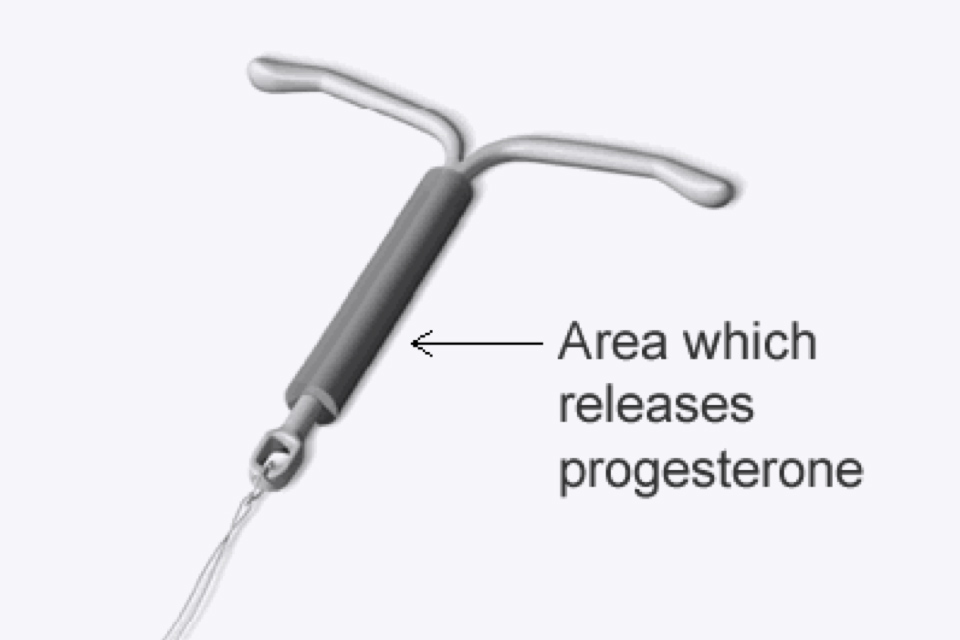Mirena IUS
The Mirena IUS is a contraceptive device which is placed inside the womb. It contains a small amount of progesterone hormone called Levonorgestrel. This hormone is used in a variety of contraceptive Pills. The Mirena IUS releases levonorgestrel very slowly into the womb. This hormone stops the lining of the womb thickening each month making the periods shorter and lighter.

How does it work as a contraceptive?
The Mirena IUS makes it difficult for an embryo to implant in the womb. Cervical mucus also becomes thicker which makes it harder for sperm to get into the uterus. Finally, in some cases the Mirena IUS can temporarily stop the ovaries from producing eggs (ovulating).

How is the Mirena IUS inserted?
The Mirena IUS can either be placed in the outpatient clinic or, alternatively, it can be inserted at the time of a hysteroscopy and D&C. The device is passed through the cervix into the womb. The best time to have a Mirena IUS is either during or at the end of a period when it can be certain you are not pregnant. It is also easier to insert as the cervix is slightly more dilated.
How effective is it for treating heavy periods?
The Mirena IUS is very effective for most patients with about 70-80% of women finding that it has helped their heavy periods. After approximately three months use, the average blood loss is 85% less and around one third of ladies will stop having periods altogether. This is not a problem because the lining hasn't thickened up during the month and there is nothing to come away.
How long does the coil last for?
The Mirena IUS can be left in place for up to five years and then needs to be replaced.
When can I rely on it for contraception?
The coil is effective immediately and no other contraception is required.
How easy is it to remove?
There is a small string at the end of the coil which comes out through the cervix. Removal involves passing a speculum into the vagina and then removing the coil by pulling on the string. There is slight discomfort for one to two seconds.
How much does it cost?
The Mirena IUS costs around £90-£100. Although this sounds expensive it does, of course, last for five years.
Can it be used if I have fibroids?
The Mirena can be used if there are only small fibroids within the womb. If there are large fibroids, then this may distort the shape of the uterine (womb) cavity making it difficult to place the Mirena coil properly.
What happens when the Mirena coil is removed?
When the coil is taken out, it is quite likely that you will revert back to your normal bleeding pattern and, of course, your periods may continue to be heavy. Fertility returns very quickly but it is probably best to wait for your next period before trying for a pregnancy so that it is easier to work out how far on you are when you do fall pregnant.
What are the side effects?
1. Irregular periods
It takes approximately two to three months for the Mirena IUS to work for most ladies. During this time it is very common to have some slightly irregular bleeding which may be on a daily basis initially. The bleeding settles down with time in most patients but unfortunately a few continue to have a persistent, troublesome light period or some discharge.
2. Expulsion
There is an extremely small chance that the coil could come out, particularly if the periods remain heavy. If it is being used for contraception then the coil should be checked after each period to make sure it is still in place. This is done by self examination - if the string can be felt coming out through the cervix then it is still in position. If there is any doubt then an examination should be performed by your doctor or practice nurse.
3. Hormonal problems
The main advantage of the Mirena IUS over tablets is that the progesterone hormone is delivered directly onto the lining of the womb - only a very small amount gets absorbed into the body. This tends to reduce the risk of hormonal side effects. However, in some ladies this can cause some water retention/bloating. Premenstrual tension (PMT) can also be a concern for a minority of women although this tends to get better with time.
4. Pelvic infection
Although most normal coils increase the risk of pelvic infection, this does not seem to be the case with a Mirena coil.
5. Contraceptive failure
The Mirena IUS is an extremely effective form of contraception. If 1000 women used a Mirena IUS for a year, only one would fall pregnant compared to about ten for the normal coil or 20 for the Pill. As with all coils, if it does fail there is a higher risk of ectopic pregnancy. If you fall pregnant then it is important to see your doctor to rule out an ectopic pregnancy.

